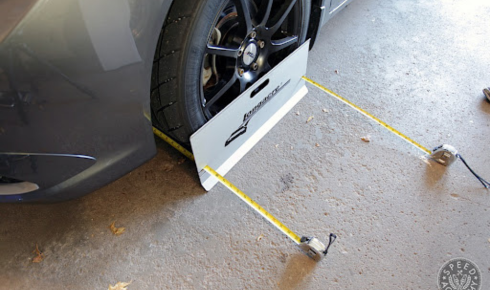Let’s be honest—alignment isn’t the flashiest topic in the auto world. It doesn’t purr like a tuned engine or gleam like a new paint job. But if you’ve ever driven a truck that drifts like it’s trying to make an exit you didn’t ask for, you know that alignment isn’t just important—it’s essential.
In the world of heavy-duty vehicles and commercial fleets, alignment is the quiet hero. It keeps tires from wearing out too fast, ensures better fuel economy, and makes the entire driving experience safer. But getting it right takes more than eyeballing it or leaning on old tricks. It takes solid tools, clear data, and know-how. That’s where alignment gear truly matters.
Why Accuracy Isn’t Optional Anymore
Gone are the days when a seasoned mechanic could squint down a line and say, “Looks straight enough.” Trucks today are more complex. Suspension systems are tighter. The tolerances are smaller. And that’s why precision alignment tools have become the backbone of any serious alignment bay.
These tools don’t just make life easier—they make it exact. Think laser-guided measurements, live-angle readings, wireless sensors. They strip the guesswork out of the process. And with rising labor costs and tighter margins, doing the job right the first time isn’t a luxury—it’s survival.
The Unsung Role of Truck Camber Kits
Now, let’s talk about camber. Not the most glamorous word, but oh-so-crucial—especially for trucks hauling heavy loads or logging long highway miles. A few degrees off, and you’re looking at uneven tire wear and a steering wheel that never quite feels “right.”
That’s where truck camber kits come in. These kits give techs the control to adjust angles that were once locked or difficult to fine-tune. Especially useful for lifted or customized trucks, they help bring alignment back within spec—without having to redesign the entire suspension setup.
And for shops that regularly deal with performance vehicles or lifted trucks, camber kits aren’t just a tool—they’re a necessity. They’re like giving your alignment technician a wrench and a magic wand rolled into one.
Equipping the Shop the Right Way
If you’re running or upgrading a workshop, the tools you invest in say a lot about your standards. There’s the bare minimum… and then there’s professional-grade. That doesn’t mean going broke chasing the latest gadget. But it does mean being intentional with your investment.
Things like lift-compatible sensors, intuitive software interfaces, and adjustable heads all fall under shop alignment gear that makes life smoother. Plus, having reliable gear reduces technician frustration (and we all know happy techs do better work). It keeps customers returning because their vehicle doesn’t just feel better—it is better.
And while some shops try to get by with outdated systems, the truth is, modern alignment jobs require modern solutions. Trucks are evolving. Shops should too.
It’s All in the Follow-Through
Let’s say you’ve got the tools, the gear, the team. That’s not the end of the story. Regular calibration, maintenance, and even training are what keep your alignment setup performing at its best.
We’ve seen shops invest thousands in top-tier equipment, only to fall short because the system was out of calibration or the technician didn’t understand all its functions. That’s like buying a racecar and never checking the oil. Precision gear only works when it’s used properly.
Workshops that treat alignment as a system—tools, knowledge, workflow—tend to stand out. Their alignments last longer. Their customers notice the difference. And in a competitive market, that kind of trust is priceless.
Wrapping It Up (But Not Too Neatly)
So, alignment might not grab headlines, but it grabs tires, fuel, and safety by the horns. The difference between a truck that glides down the highway and one that grinds through tires in six months? It’s alignment—and how seriously your shop takes it.

